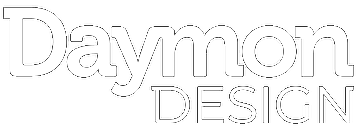Society today is becoming more globally-minded and at the same time, populations and cultures within countries are becoming more diverse. As a result, many retailers and brands are looking to extend their reach, bringing their products to consumers in all corners of the world. But according to Jens Sievert, Design Manager for Daymon, assuming that all consumers will respond to the same branding and design approach would be a mistake.
“Despite the fact that we are heading toward a more globalized world, there are many local differences regarding design solutions,” Sievert explains. “These have to do with cultural differences and with what I call the ‘local visual culture.’ Each country has a design history regarding communication, politics, religion and arts, so the visuals people are accustomed to differ.”
Everything from color to typography to graphics can be perceived differently depending where on the globe you are, Sievert explains. “The color white may be seen as cheap in one country and expensive in another. Some typefaces shift between old-fashioned and contemporary depending on the location. Also, photography concepts and subjects change.”
Sievert recalls a time his team learned about differences in cultural perceptions first-hand. When developing the packaging photography for a client in Africa, the team began with photography that showed ingredients in their isolated states—a design tactic that’s common in Europe and the United States. “But in South Africa, people were uncomfortable with the absence of a plate holding each ingredient. It reminded them of local markets where food was put directly on the floor, giving them a perception of dirtiness,” recounts Sievert.
"...careful market and consumer research is needed for each country and culture a retailer or brand plans to target."
To avoid any kind of misperception and ensure a design has its intended effect, there are two critical elements, says Sievert. First, each team member, from the designers to the project managers, “must have an open mind for understanding different cultures, enjoy travel and have a great perception about the consumer needs.” Second, careful market and consumer research is needed for each country and culture a retailer or brand plans to target.
Daymon’s international design team—who delivers branding proposals for countries ranging from Finland to Saudi Arabia to South Africa—conducts its research using a mixture of local store visits and social network analysis, as well as working with Daymon’s Strategy and Insights group and teams in the field.
Sievert says the goal of the team’s research is not simply to find the commonalities between countries a product will be cross-promoted in, but also to look for small differences that could potentially derail the intent of a design. Depending on what the team finds, it may mean coming up with creative solutions to overcome the differences and create a design that resonates with consumers across a region. In other instances, it may mean creating completely different designs for the same product sold in different countries.
In addition to having a strongly foundation of research, Sievert says language is another important factor to consider in the design process, says Sievert. “We have some brands that sell in different countries and completely change the language on their package design depending on where it’s sold. But we also have brands that sell in three countries and have all three languages on the same package. As you can imagine, this impacts the available space for the design.”
Some of the most challenging projects Sievert has worked on are products that feature both Arabic and English on the packaging—languages that are written in opposite directions (Arabic from right to left, and English from left to right). “We try to solve these problems in an interesting way for both languages, and we see very dedicated and unique solutions for this at work in the Middle East,” he explains. “These are the types of challenges we like. They are presented to us as constraints but later become our friends when driving the process to deliver a dedicated design solution for any brand, retailer or region.”
Dig deeper into this with Jens Sievert
